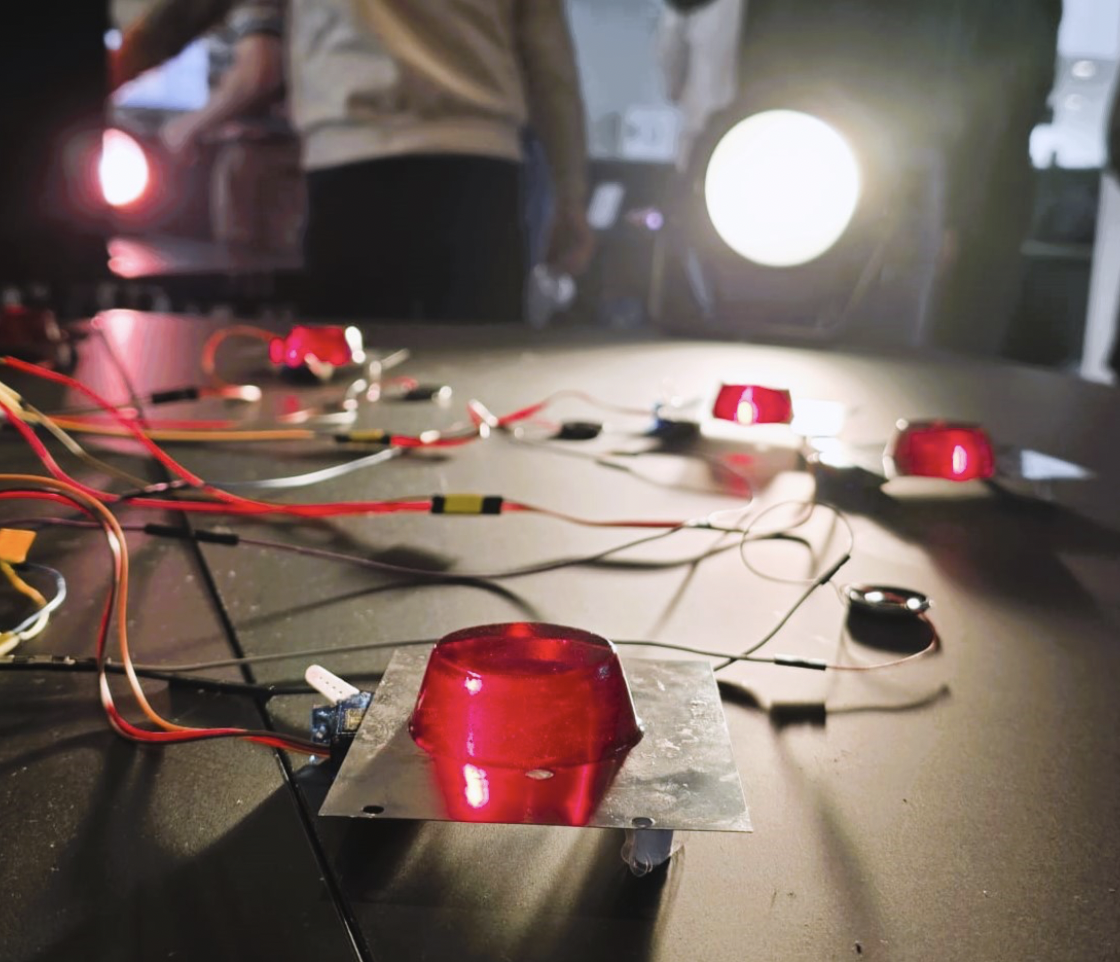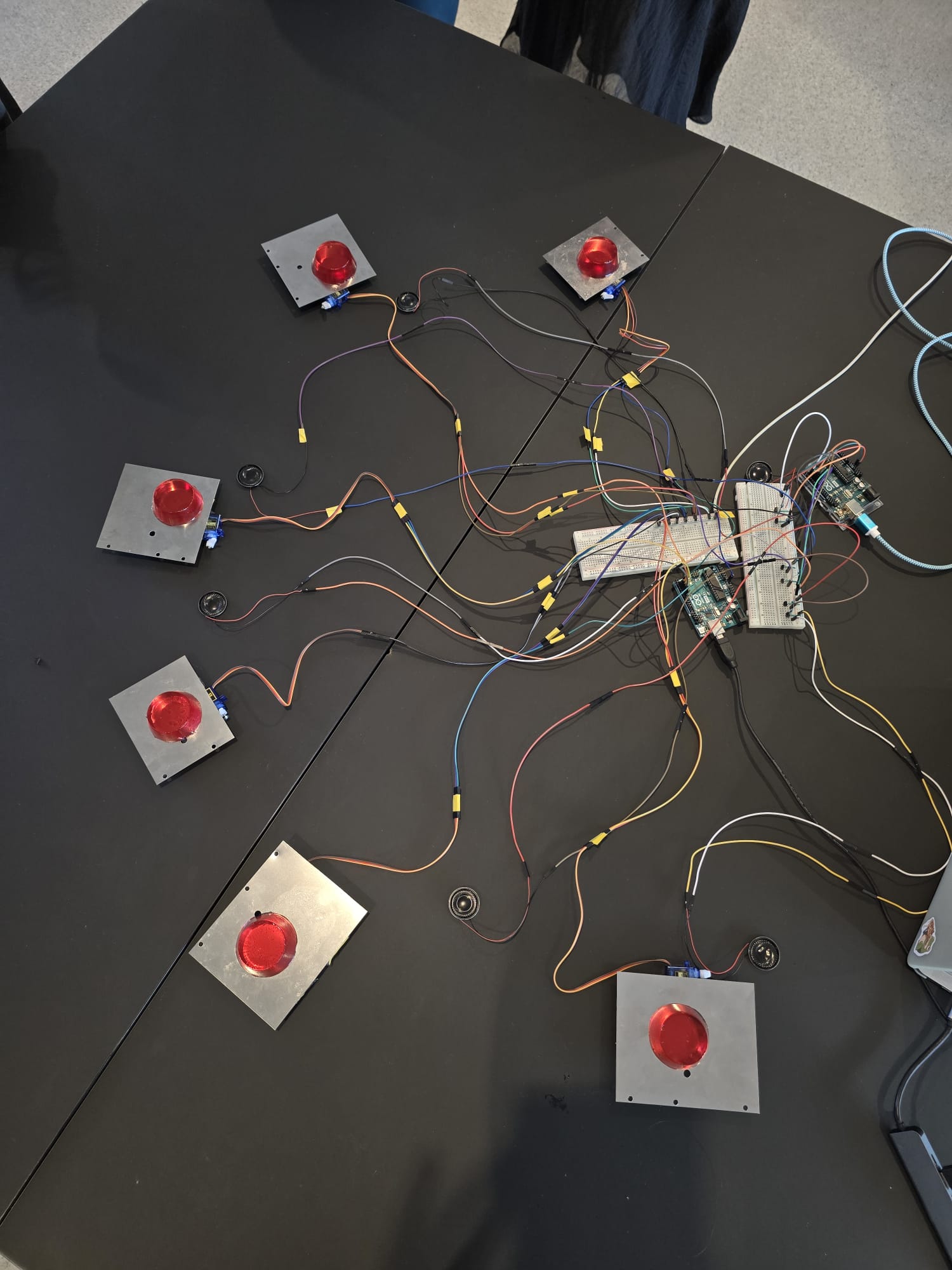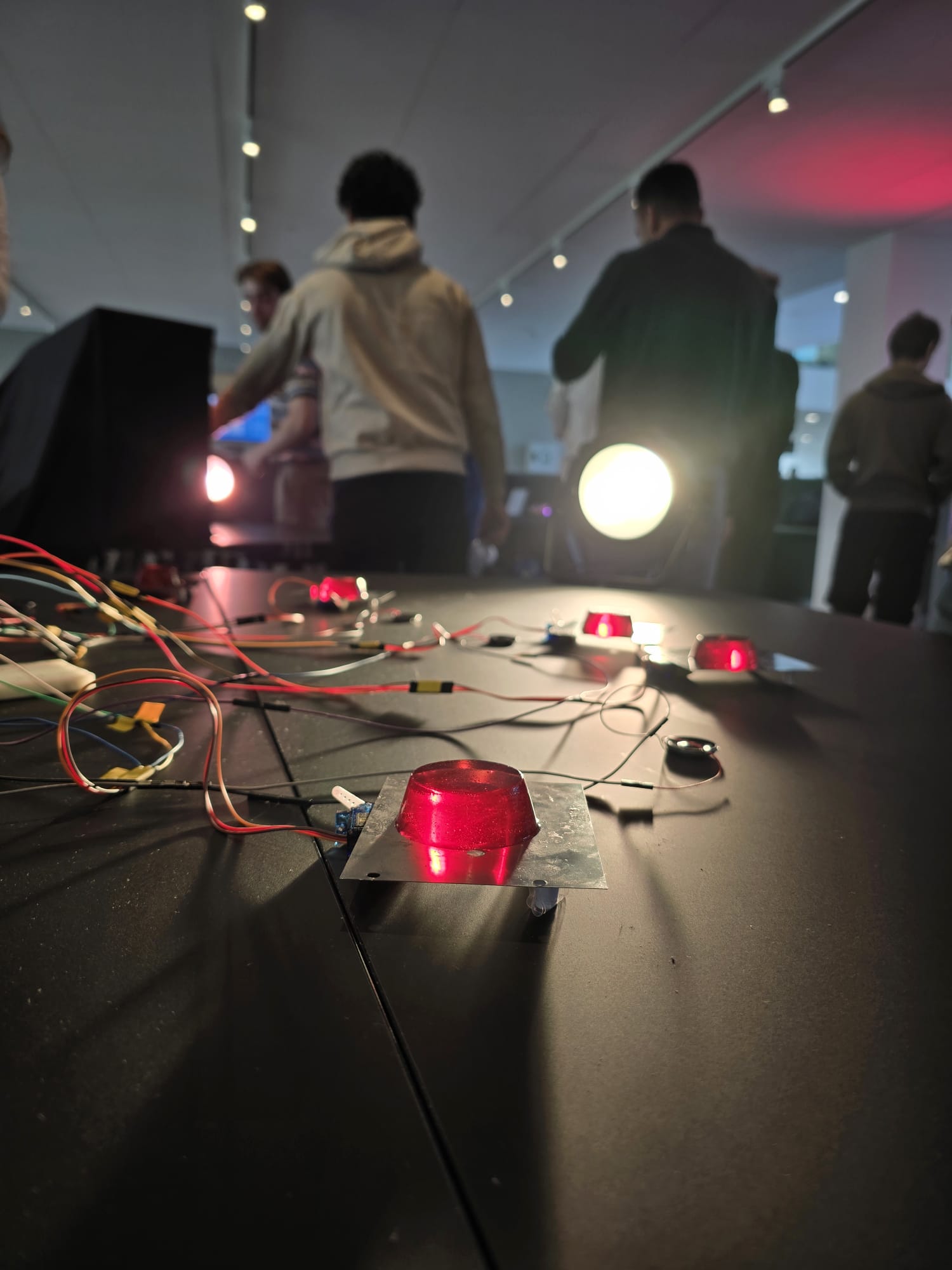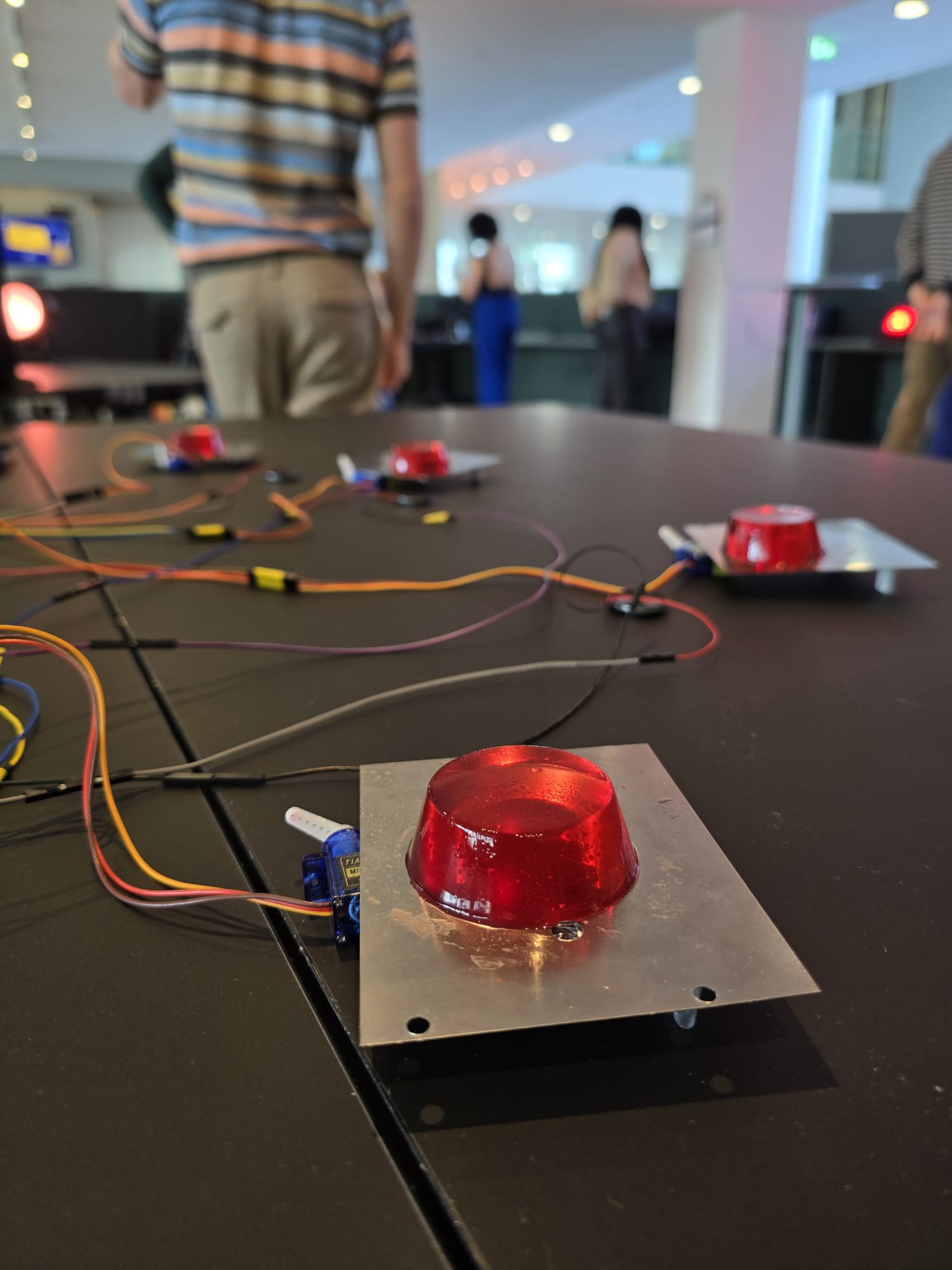THE GIGGLE VIRUS
COLLABORATION WITH MIRUNA COTFAS AND DAILEEN THIEME
Laughter is one of the first communicative abilities all humans are capable of [1].
We are born to laugh and we've heard about dying from laughter as well [2].
Laughter is universal, every human understands the communicative aspect regardless of their native language.
... but to us, its most compelling attribute is that laughter is contagious.
Hearing someone laugh without any other context is often enough to trigger laughter in the listener [3]. It is like a virus, passing from one person to the next, spreading everywhere.
We're introducing the giggle virus, designed to infect both artificial creatures and, if strong enough, human observers as well. Interactors are encouraged to tell a joke that triggers a laughter track and consequently infects our first jelly creature, which thus becomes "patient zero". Then, in pairs, the jellies pass the virus to each other. Mirroring the unique laughter of humans, each creature displays a different robotic laugh which reflects its individual personality.
To add a physical representation alongside the auditory, we took inspiration from the linguistic expression "shaking with laughter". As the contagion protocol is unfolding, the jellies start shaking in various intensities.



...but when laughter is no longer conveyed through a human voice, can it still provoke people to laugh?
This question played the central role in the creation of our installation; the giggle virus has proven to be highly contagious, with an infection rate of over 90%. If humans come into contact, they start smiling and laughing. There is no known cure...

References
[1] Sroufe LA, Wunsch JP. 1972 The development of laughter in the first year of life. Child Dev. 43, 1326–1344. (doi:10.2307/1127519)
[2] Provine, R.R. Contagious laughter: Laughter is a sufficient stimulus for laughs and smiles. Bull. Psychon. Soc. 30, 1–4 (1992). (doi: 10.3758/BF03330380)
[3] Provine RR, Fischer KR. 1989 Laughing, smiling, and talking: relation to sleeping and social-context in humans. Ethology 83, 295–305. (doi:10.1111/j.1439-0310.1989.tb00536.x)
[4] Inoue, K., Lala, D., & Kawahara, T. (2022). Can a robot laugh with you?: Shared laughter generation for empathetic spoken dialogue. Frontiers in Robotics and AI, 9. (doi:10.3389/frobt.2022.933261)

WIDER CONTEXT & MOTIVATION FOR OUR WORK
When trying to imagine how the quality of laughter could best be portrayed in artificial creatures, we wanted to combine characteristics of both realms - programmed nature and humanness. The viral aspect of laughter proved to be a great bridge between the two, visually expressing the contagious condition and spreading information through connected systems.
Additionally, the specific characteristic of laughter we based our work upon has social implications. Prior research into simulating laughter in robots revealed that people react strongest to shared laughter, prompted by a trigger coming from the interactor [4]. Because of this, we decided to integrate the audience into the installation by inviting them to tell a joke, which creates a more natural dynamic, sets the scene for the users to create somewhat of an empathetic bond with the artificial creatures and ensures that the experience feels genuine. The giggle virus was limited to a one-minute single loop of contagion per interaction, as studies have shown that overexposure to this stimulus can become obnoxious or unsettling [3].
Furthermore, we wanted to create an installation that immerses the user using an audio-phonic setup, but steers clear from emotion recognition in facial expressions. Our creatures are featureless, and yet, they are expressive through movement and robotic tones. The choice of jelly was not merely due to its potential to jiggle, but also because, as a medium, it is familiar, potentially bringing users memories of childhood or simply providing the experience with a playful angle.


